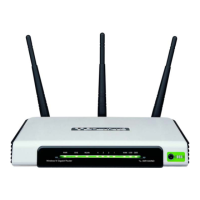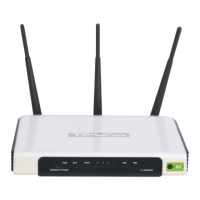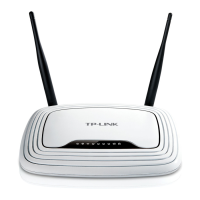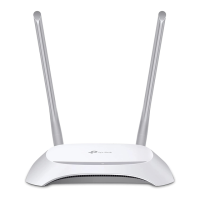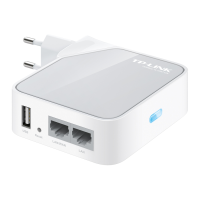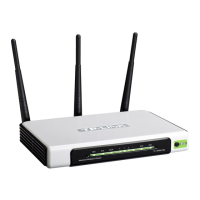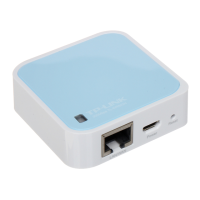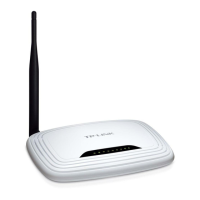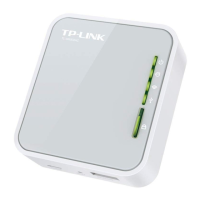-59-
4.11 Forwarding
Figure 4-53 The Forwarding menu
There are four submenus under the Forwarding menu (shown in Figure 4-53): Virtual Servers,
Port Triggering, DMZ and UPnP. Click any of them, and you will be able to configure the
corresponding function.
4.11.1 Virtual Servers
Choose menu “Forwarding→Virtual Servers”, and then you can view and add virtual servers in
the next screen (shown in Figure 4-54). Virtual servers can be used for setting up public services
on your LAN. A virtual server is defined as a service port, and all requests from Internet to this
service port will be redirected to the computer specified by the server IP. Any PC that was used
for a virtual server must have a static or reserved IP address because its IP address may change
when using the DHCP function.
Figure 4-54 Virtual Servers
Service Port - The numbers of External Service Ports. You can enter a service port or a
range of service ports (the format is XXX – YYY; XXX is the Start port and YYY is the End
port).
Internal Port - The Internal Service Port number of the PC running the service application.
You can leave it blank if the Internal Port is the same as the Service Port, or enter a
specific port number when Service Port is a single one.
IP Address - The IP address of the PC running the service application.
Protocol - The protocol used for this application, either TCP, UDP, or All (all protocols
supported by the router).
Status - The status of this entry, "Enabled" means the virtual server entry is enabled.
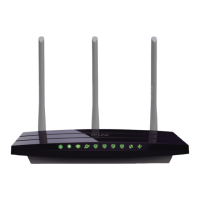
